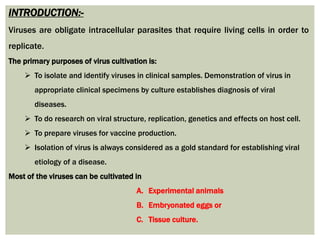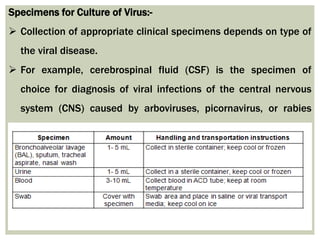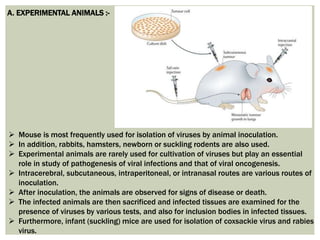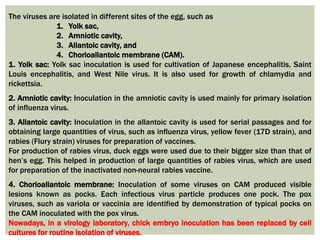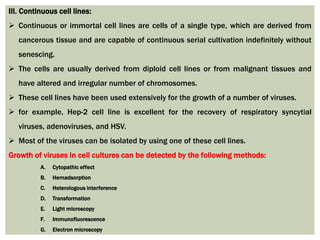This document discusses virus isolation and cultivation. It explains that viruses require living cells to replicate and the primary purposes of cultivation are to isolate viruses from clinical samples, conduct research, and produce vaccines. Viruses can be cultivated in experimental animals, embryonated eggs, or tissue culture. Tissue culture is now most commonly used and involves growing viruses in primary cells, diploid cell strains, or continuous cell lines. The document describes different tissue culture methods and how viral growth can be detected using cytopathic effects, hemadsorption, interference, transformation, and microscopy.

